The exhibit Shakespeare on Page and Stage: A Celebration (Audubon Room, January 11-April 27, 2016) showcases both the textual and performance history of Shakespeare’s plays. This post will be the first of a series exploring specific productions in greater detail than the limited physical space of an exhibition allows.
U-M Special Collections Library is home to the papers of Ellen Van Volkenburg and Maurice Browne, founders of the Chicago Little Theater. In addition to the couple’s involvement in the Little Theater Movement, Ellen Van Volkenburg also played a key role in the artistic puppet revival of the early 20th century in the United States. She studied puppetry in Europe and upon her return to the United States produced several elaborate puppet shows, including A Midsummer Night’s Dream. First performed at the Chicago Little Theater in 1916, later productions also took place in New York City (1920) and San Francisco (1924). The archival collection includes materials from all three, but the West Coast production is best represented.
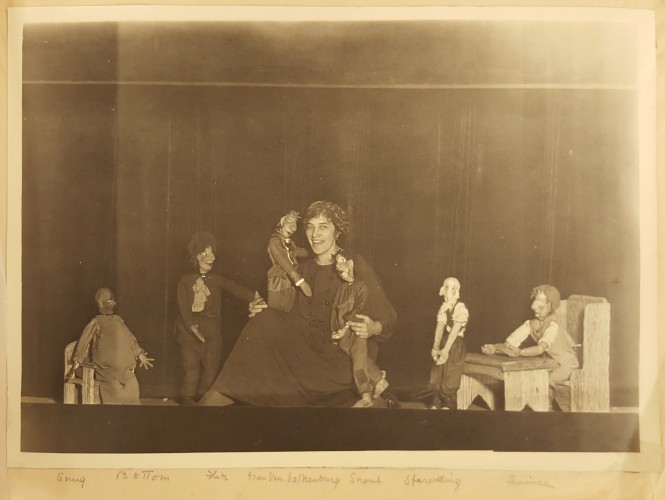
Ellen Van Volkenburg with marionettes. Scrapbook 18. Ellen Van Volkenburg and Maurice Browne Papers, 1772-1983.
The original marionettes used in the Chicago and New York productions were were modeled by Kathlkeen Wheeler, a well-known sculptress. In San Francisco, however, however, Van Volkenburg asked local artist Perry Dilley to produce a new set of wooden figures. The San Francisco production served, in part, as a benefit for the San Francisco Theater Productions School.
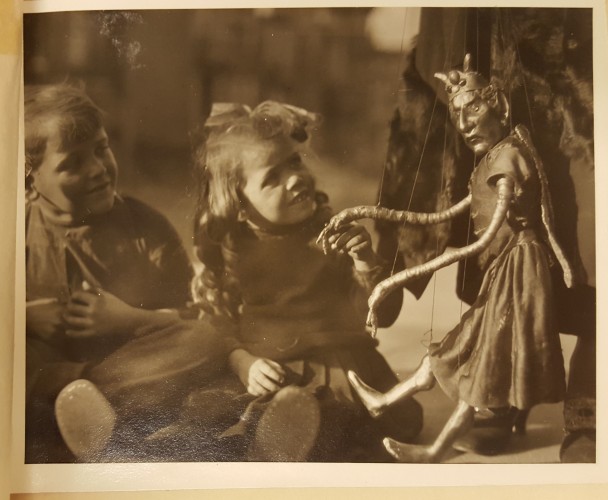
Photograph of children watching one of Ellen Van Volkenburg's marionettes. Scrapbook 18. Ellen Van Volkenburg and Maurice Browne Papers, 1772-1983.
Van Volkenburg approached her puppet shows with the same seriousness as her live stage productions and gave great attention to details of sets, lighting, and sound effects. As this 1924 review of the San Francisco production notes, the lighting was so skillfully handled as to make the puppets’ strings almost invisible. The excerpt below from the production's lighting plot shows the effort that went into this aspect of the performance.
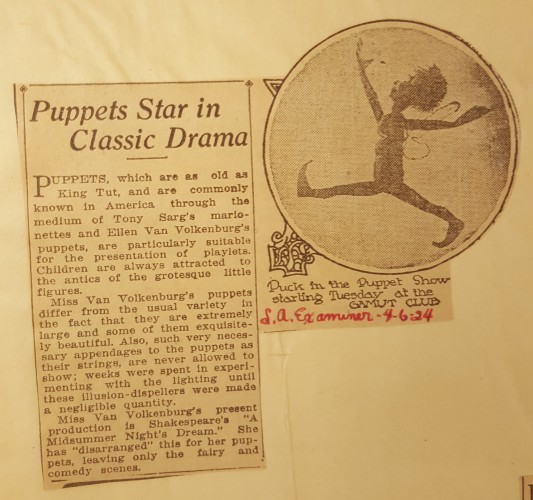
"Puppets Star in Classic Drama." Scrapbook 18. Ellen Van Volkenburg and Maurice Browne Papers, 1772-1983.
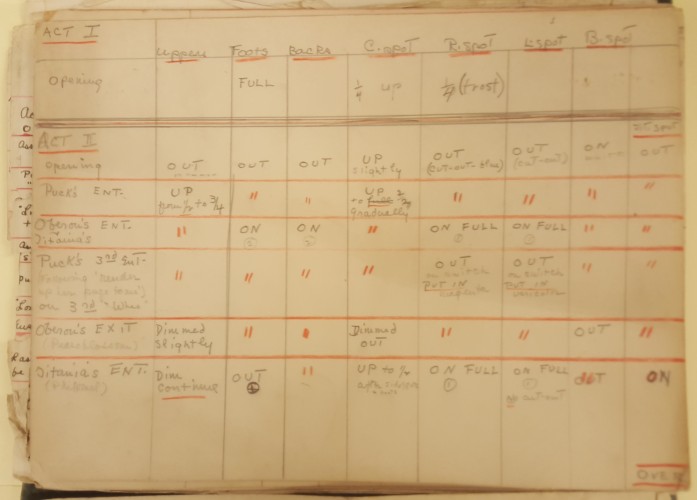
Act I Lighting for A Midsummer Night's Dream. Box 32. Ellen Van Volkenburg and Maurice Browne Papers, 1772-1983.
One of Van Volkenburg’s key innovations was to unite the manipulation and voicing of her puppets - in fact, she is sometimes credited with coining the term puppeteer to describe a person who handles both aspects of marionette performance. The difficulties of this endeavor cannot be over-emphasized. The half-dozen puppeteers of the San Francisco production rehearsed 6 hours a day for seven weeks in order to master the motions of 30 marionettes, in conjunction with distinctive voices for each character, not to mention remembering all their lines and avoiding tangled strings!
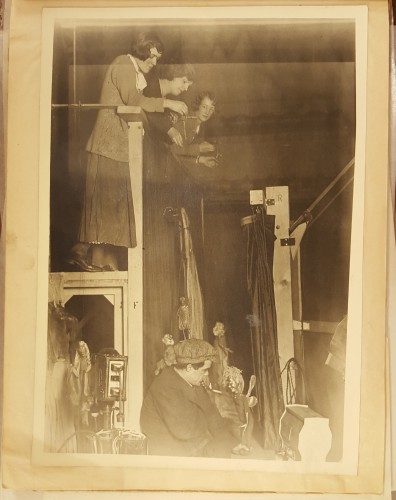
Puppeteers and back-stage view of A Midsummer Night's Dream. Scrapbook 18. Ellen Van Volkenburg and Maurice Browne Papers, 1772-1983.
Van Volkenburg was unapologetic in making extensive cuts to the script of Shakespeare’s play to suit her purpose. In fact, rather than an "arrangement" of the play, she referred to it as "disarranged for her puppets.” Her goal was to emphasize the light-hearted, playful aspects of A Midsummer Night’s Dream for an intended audience of “all good and bad children (from 6 to 60).”

Program for 1924 performance of A Midsummer Night's Dream. Scrapbook 18. Ellen Van Volkenburg and Maurice Browne Papers, 1772-1983.